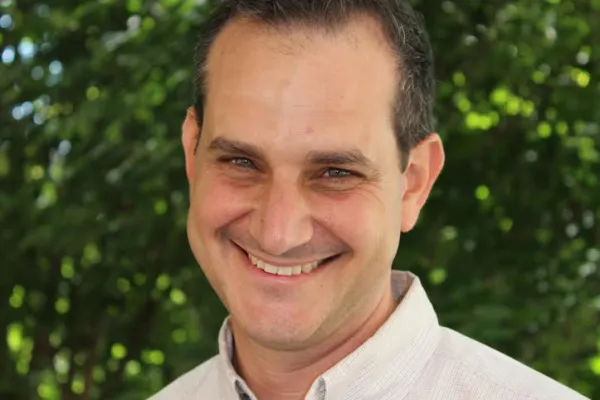Seeing Green: An Interview with the Director of Campus Sustainability
News of Note

Published September 9, 2014
Dano Weisbord, who began work August 1 as director of campus sustainability and space planning, didn’t need a campus map or a briefing on the history of environmentalism at Smith.
That’s because Weisbord proposed the creation of the Office of Environmental Sustainability and served as its first director from 2008 to 2010.
After a four-year stint in London at ActionAid, an international aid and development organization, Weisbord is back at Smith helping lead efforts to create a more eco-friendly campus. His office’s dual mission is to integrate environmentally sustainable practices into daily college operations and to engage students in developing creative solutions to such real-world challenges. Weisbord holds an undergraduate degree in industrial design from the Rhode Island School of Design and a master’s degree in urban and environmental policy and planning from Tufts University. Here’s what he had to say about his return to Smith and his work on campus:
How has the job of sustainability director changed since you were last at Smith?
Weisbord: “The job has a significant new component. There are now really two pieces to my role. The first is the campus sustainability work: educating and advocating for reducing our natural-resource footprint. The second is a strategic planning role that looks at how we are using our buildings. Smith is space-rich compared with some of our peers. We need to ensure we’re using our space wisely.
What will your priorities be over the next few months?
Weisbord: “We’ve just hired Emma Kerr as our new campus sustainability coordinator. Emma comes to Smith from the Berkshire Museum, where she was a public program and natural science education specialist. She’ll be doing a lot of the day-to-day work in our office. That will free me up to start working with the Committee on Sustainability on what our areas of focus should be for reducing our impact on the environment.”
Smith was recognized recently by the Sierra Club as one of the top “green” campuses in the country. What are we doing right?
Weisbord: “One thing we’ve been working really hard on is food sustainability. CEEDS (Smith’s Center for the Environment, Ecological Design and Sustainability) has a new food concentration, and Dining Services just received a grant to increase our use of local food. So there’s a really nice set of activities happening around food and composting on campus. We’ve also been working on the large infrastructure side with our co-generation plant that produces more of our electricity. On the small infrastructure side, we’ve been getting rid of old fluorescent tube lights, for example, and replacing them with LEDs (light-emitting diode lights) that use less energy. One of the most exciting places doing that is the Smith College Museum of Art. They were one of the first places on campus to use LEDs.
Who are your closest allies on campus in doing this work?
Weisbord: “One of the really fun things about this job is that it’s interdisciplinary. I work with academic departments, with environmental science and policy majors, with facilities, dining services and residence life departments. There’s no point in doing sustainability at Smith without relating it to education; that’s what we do. When I left, CEEDS didn’t yet exist. Now, we have a new academic major in environmental policy and new concentrations in sustainable food and climate change. We have so many more resources dedicated to this effort.”
What about community outreach?
Weisbord: “A major part of the mission of my office is reducing the impact of the college on the environment and doing so in a way that engages the campus community. Another key piece is how we connect with the larger community. I know most of the sustainability directors in the Five Colleges network, and it’s a great group. I’m looking forward to renewing those relationships.”
What have you learned from working in international development?
Weisbord: “I didn’t have a car for four years so I learned that biking is fun. Just being out in the world, traveling to places like Bangladesh and Myanmar and seeing, up close, the effects of climate change was a real eye-opener. I also worked with some brilliant people in the world of corporate sustainability—a business model that can address global trends. So I have a whole new set of ideas, new arrows in my quiver.”
What are you looking forward to most about being back at Smith?
Weisbord: “Working with students—that’s always been the most fun for me. Our campus challenge is the same as the rest of the globe: how to provide people with high-quality lifestyles using available resources. The parallel challenge for us is how to provide quality education using fewer natural resources. We need to engage students, faculty and staff in finding areas where we can innovate.”